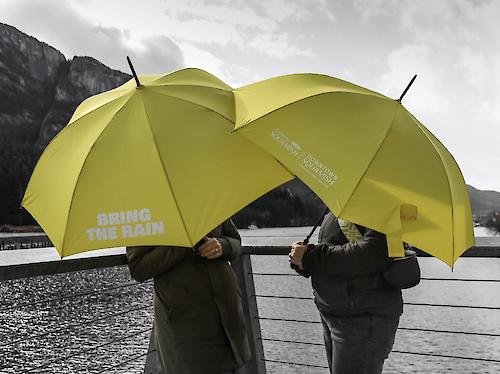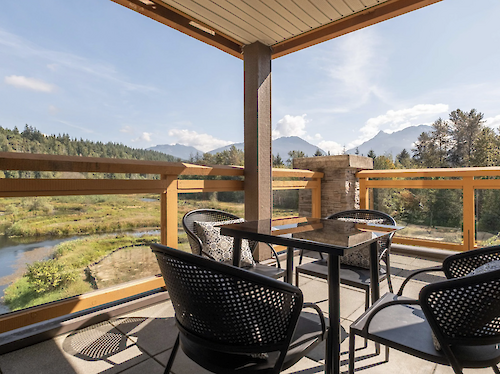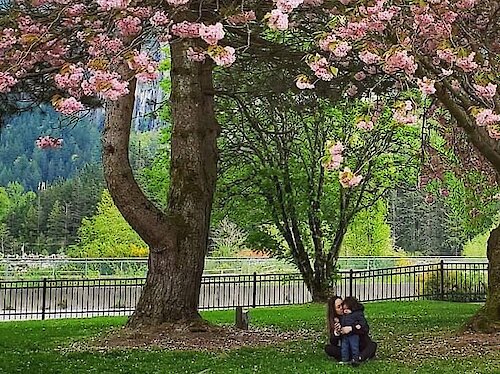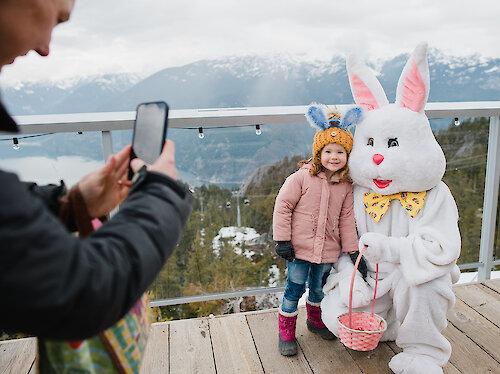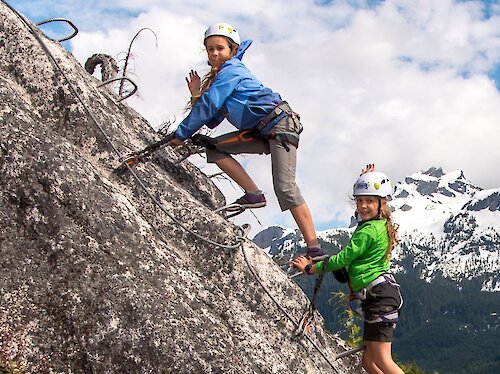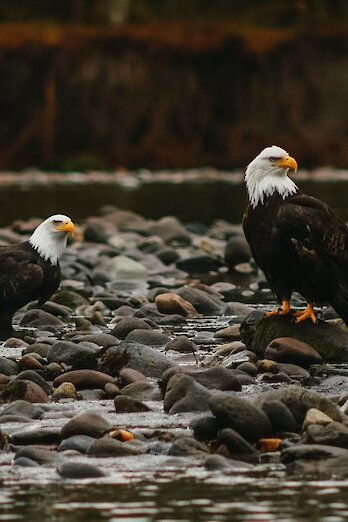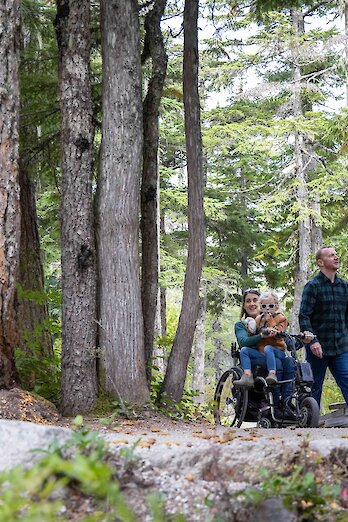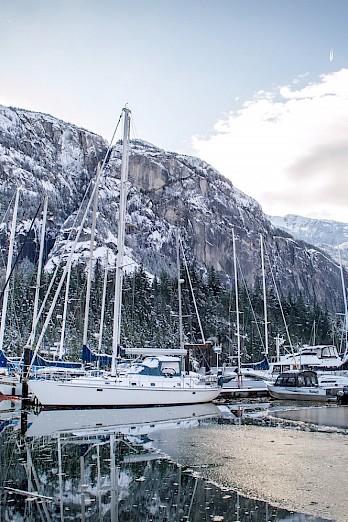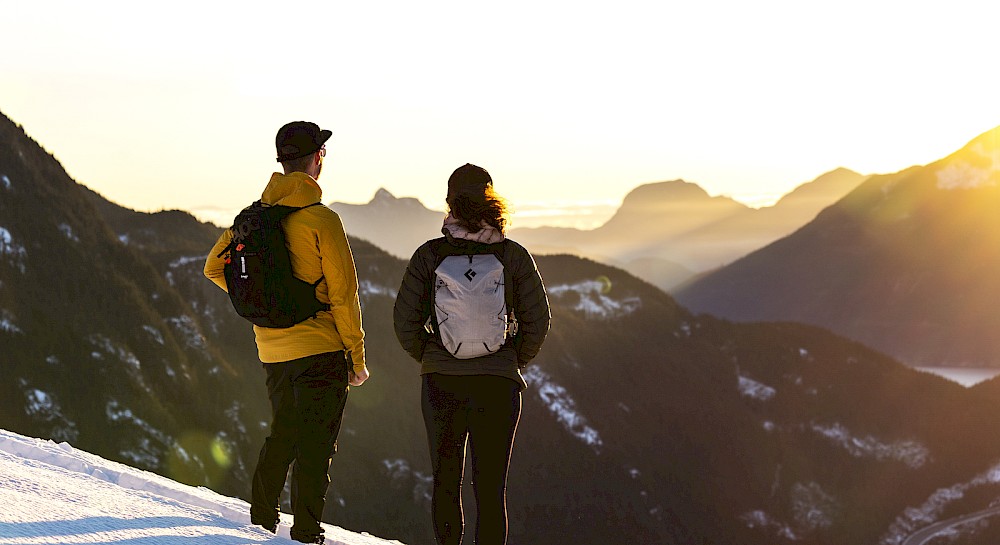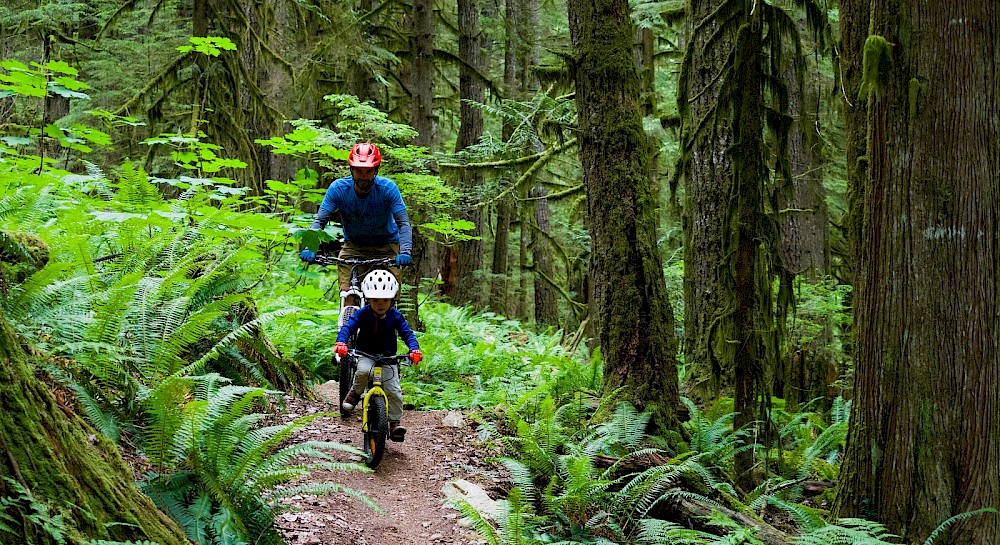Eagle Viewing in Squamish




Squamish is a bird watcher’s paradise. In the winter months, as the eagles gather en masse, it is truly a sight to behold.
Every fall, Squamish becomes home to one of North America’s largest congregations of wintering Bald Eagles ((Haliaeetus leucocephalus). In the first 3 weeks of October, 10,000 salmon make their annual journey upstream to spawn, attracting over 1,300 eagles to take shelter for the cold winter months and hunt for their favourite dish.
The best time to see these amazing raptors is in the mornings from October until early January. There are several spots around town for viewing as well as tours that can take you to some of the hard-to-get-to regions. Bring your binoculars for an even closer look.

Where to go
Prime sightings of these great sentinels of the coastal forest usually happen at Eagle Run dike and viewing shelter opposite the BC Easter Seals camp on Government Road, directly across the Squamish River overlooking Brackendale Eagles Provincial Park. Here you’ll find an interpretive display of our eagles and the lifecycle of the chum salmon on which they feed.
Squamish Eagle Watch volunteers will be conducting daily counts on the dike and will be posting these numbers on their website and Facebook page, so Eagle enthusiasts can check in to see how the eagles are doing.
Eagle Run dike is an accessible site: there is a ramp at the south end. In the winter months, snow on the ramp is cleared by volunteers when possible, but access to the site is more limited. The Eagle Run viewing shelter is open year-round and is designed to welcome visitors during the peak eagle-viewing period and features information from the EagleWatch Interpretive Program.
You can also visit the Tenderfoot Creek Hatchery. Open to the public seven days a week from 9am-3pm, they are a great place to view the eagles as well as a variety of salmon species. They have public washrooms, picnic tables, and you can learn about Squamish salmon populations, their importance to the ecosystem and how they co-exist with eagles, as well as Tenderfoot’s involvement in the populations.
Be sure to stop by the Squamish Adventure Centre and we’ll give you a map and rundown of tours or where to find the best viewing spots.
Useful information
Early morning: when eagles are searching for food after a long, cold night.
Mid-afternoon: (Between 2:30 and 3:30) when eagles leave their feeding areas for their roosting spots to settle in for the night.
Check the trees: Eagles spend most of their time roosting in tall trees.
Maximize your time and get an insiders view.
Right now all Eagle tours are self-guided. Please inquire at the Squamish Adventure Centre for tips and locations to view the eagles.
Be an ethical eagle observer
Ethical eagle viewing ensures the Squamish eagles come back year after year. Please follow these viewing practices to keep the eagle population alive and well.
- Keep your distance: Do not approach an eagle you see feeding on the shore. An eagle who is forced to leave its food may not return to it, and it needs to conserve energy to survive the winter
- Do not use drones: Use binoculars or telephoto lenses to get a closer look
- Stay on the dykes: Please do not walk on the gravel bars or private land
- Keep dogs on a leash: Do not let dogs chase wildlife
Nerdy About Nature
When
Know Before You Go
Be sure to check the BC Parks website for the latest seasonal, trail and park updates.
Shops, Tour Providers & Outfitters
Set yourself up for success with gear, guides and some local know-how.
Hear the call of the wild beckoning you.
Whether you are looking to push limits, enjoy a fun day out or just appreciate the views, you will not lack inspiration.
